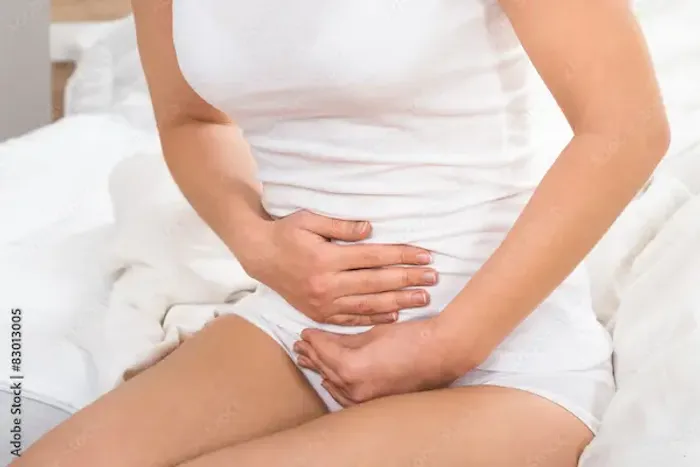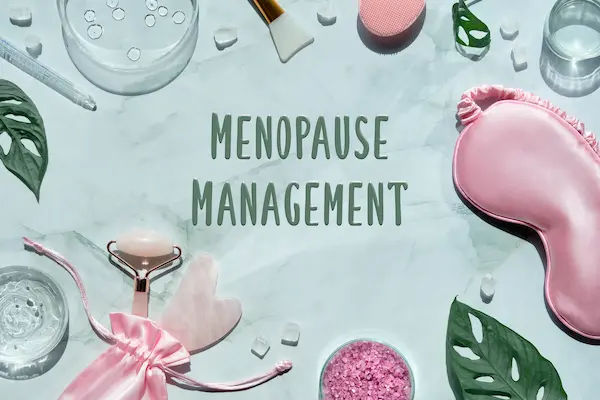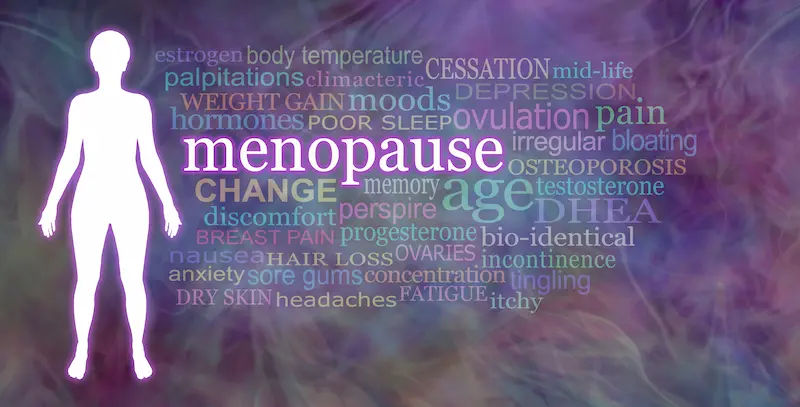Guide to Managing Bladder Control During Menopause
Know about the bladder control during menopause, common problems, when to seek doctor, diagnosis, wight, constipation and everyday habots influencing the condition and more.

Written by Dr. Siri Nallapu
Reviewed by Dr. Rohinipriyanka Pondugula MBBS
Last updated on 21st Oct, 2025

Introduction
If you’ve noticed new leaks when you sneeze, sudden urges that send you running to the bathroom, or nighttime trips disrupting sleep, you’re not alone. Bladder control often changes around perimenopause and menopause. Shifting estrogen levels, natural changes in pelvic tissues, and lifestyle factors can make the urinary system more sensitive—yet there’s a lot you can do to regain control. This practical guide explains why bladder control shifts during menopause, the most common patterns (including overactive bladder and stress incontinence), and the step-by-step strategies—at home and with your clinician—that work best.
We’ll cover proven pelvic floor and bladder training, dietary and lifestyle tweaks, and medical options like vaginal estrogen or overactive bladder medicines, plus when devices and procedures make sense. You’ll find clear examples, evidence-backed tips, and realistic timelines to see progress. Whether you’re managing occasional drips or daily urgency, use this as your action plan to strengthen bladder control during menopause and get back to the activities you love.
Why bladder control changes during menopause
It changes due to the following reasons:
Hormonal shifts and the urinary tract
Estrogen receptors are distributed throughout the lower urinary tract and pelvic tissues. As estrogen declines in
perimenopause and menopause, the urethral lining can thin, blood flow can lessen, and the bladder may become more
irritable. These changes can reduce urethral closure pressure and alter bladder sensations, contributing to urgency,
frequency, and leakage. Many women also notice dryness or burning, which reflects broader genitourinary changes
rather than a bladder infection. Understanding this hormone-sensitive system helps explain why symptoms often cluster around midlife and early postmenopause.
Consult a Top Gynaecologist for Personalised Advice
Genitourinary Syndrome of Menopause (GSM) and tissue changes
GSM is the modern term for the constellation of vaginal and urinary symptoms related to low estrogen—dryness,
discomfort, recurrent UTIs, urgency, and frequency. Local tissues lose elasticity and moisture, which can amplify
friction and irritation during daily activities. In the urethra and bladder neck, this can mean less cushion against
pressure spikes (like a cough), while the bladder itself may send “false alarms” that it’s full. Local vaginal estrogen (creams, tablets, rings) can restore mucosal health with minimal systemic absorption and has been shown to improve
urinary urgency and frequency in many women with GSM.
Pelvic floor, collagen, and body composition after 40
Beyond hormones, age-related changes in muscle mass and connective tissue matter. Collagen remodelling, weight redistribution to the abdomen, and cumulative strain from life events (pregnancies, high-impact exercise, chronic cough, constipation) can weaken pelvic floor support. Core-pelvic coordination may also shift with posture and breathing habits, affecting the “anticipatory” squeeze that protects against leaks. The good news: just like any muscle group, the pelvic floor and core can adapt with targeted training, and these changes remain responsive well into later life.
Common bladder control problems tied to menopause
The problems include:
Urgency and overactive bladder (OAB)
Overactive bladder is characterised by urinary urgency, often with frequency and nocturia; some women also
experience urge incontinence (leakage before reaching the toilet). Menopause can unmask or worsen OAB due to GSM
and heightened bladder nerve sensitivity. Triggers include caffeine, alcohol, artificial sweeteners, and stress. Many women notice an “all-at-once” wave of urgency with key-in-lock syndrome when arriving home. Behavioral strategies (bladder training and urge-suppression techniques) and local vaginal estrogen can substantially reduce urgency episodes.
Stress urinary incontinence (leaks with cough/sneeze)
Stress incontinence occurs when pressure in the abdomen (coughing, sneezing, laughing, jumping) exceeds the urethra’s closing pressure. Pelvic floor weakness or urethral support changes increase the risk. Around menopause, tissue thinning and decreased urethral coaptation can tip the balance. Classic clues: a small leak with a cough, during exercise, or when lifting. First-line treatments include pelvic floor muscle training (PFMT), weight management, and activity modifications. For persistent stress incontinence, devices (pessaries) or surgical slings can be highly effective.
Mixed incontinence, nocturia, and recurrent UTIs
Many women have mixed incontinence features of both stress and urgency. Nighttime urination (nocturia) can reflect OAB, sleep disturbances, evening fluids, or diuretic medications. Recurrent UTIs may increase after menopause because of GSM-related changes and altered vaginal flora; they can also exacerbate urgency/leakage. Distinguishing these patterns guides treatment: for example, bladder training for urgency, PFMT for stress leaks, and vaginal estrogen for GSM. Keeping a simple bladder diary for 3–7 days helps reveal triggers and patterns.
When to seek help and what a diagnosis looks like?
Red flags that need prompt attention
See a clinician promptly if you notice blood in urine, pain or burning with fever, sudden severe pelvic pain, new
neurological symptoms (leg weakness, numbness), inability to pass urine, or leakage that begins suddenly after a fall or
surgery. These symptoms may indicate infection, stones, prolapse complications, or neurological issues and require
timely evaluation [2][4]. If symptoms persist beyond two weeks despite self-care, consult a doctor online with Apollo24|
7 for further evaluation.
What will your clinician ask and check?
Expect questions about how often you urinate, how much you leak, triggers (cough, urgency, exercise), pad use,
fluid/caffeine intake, bowel habits, and medications. A focused pelvic exam can assess pelvic floor strength, tissue
health (GSM), and prolapse. You might be asked to cough with a full bladder to observe stress leakage. A bladder diary
guides next steps and helps track progress over time.
Tests, bladder diaries, and trial treatments
Simple tests include a urine dipstick/culture (rule out infection), post-void residual check (ultrasound or catheter), and
sometimes a pad test. Urodynamics are reserved for complex or surgical cases. Many clinicians start with conservative
therapy first (PFMT, bladder training, vaginal estrogen for GSM) because it’s safe and effective. If diabetes or high
blood sugar is suspected (a common contributor to urinary frequency), HbA1c testing can help; Apollo24|7 offers convenient home collection for tests like urinalysis and HbA1c.
Everyday habits that strengthen bladder control
Fluids, caffeine, alcohol, and bladder irritants
Aim for steady, adequate hydration—often about 1.5–2 litres/day, adjusting for climate and activity. Too little fluid
concentrates urine and can irritate the bladder; too much overwhelms it. Try a 2–3 week “irritant audit”: reduce
caffeinated coffee/tea, alcohol, and artificial sweeteners; many notice fewer urgency episodes. Some people are sensitive to carbonated drinks, citrus, or spicy foods. Reintroduce items slowly to identify personal triggers. A bladder diary
template can make patterns obvious.
Weight, constipation, and activity tweaks
Even modest weight loss (5–10%) can meaningfully reduce leakage episodes, especially with stress incontinence, by lowering abdominal pressure and improving pelvic floor dynamics [2]. Prevent constipation: prioritise fibre, fluids, and regular movement; straining strains the pelvic floor. For exercise, try the “Knack”—a preemptive pelvic floor squeeze right before coughs or impact movements. Swap high-impact jumps for low-impact cardio while you build strength. With time, many can resume higher intensity without leaks [4].
Sleep, stress, and the bladder–brain loop
Stress and poor sleep increase sympathetic arousal, which can sensitise bladder signaling. Gentle evening routines,
consistent bedtimes, and limiting fluids 2–3 hours before sleep can reduce nocturia. If you wake at night, pause and use urge-suppression techniques rather than rushing; this retrains the brain–bladder reflex. Consider mindfulness or breathing exercises to calm urgency waves—slow nasal inhale, long exhale, and a few gentle pelvic floor “holds” can help the urge pass.
Pelvic floor and bladder training that actually works
The training works as:
Pelvic floor muscle training (PFMT): how, how much, how long
PFMT is first-line for stress incontinence and helps mixed incontinence. The essentials: identify the right muscles (the ones used to stop gas flow), avoid squeezing glutes or holding your breath, and train consistently. A typical plan: 3
sets/day of 8–12 strong contractions, each held 6–8 seconds with equal rest, plus quick “flicks” for urgency control, at least 12 weeks [2][4]. Evidence from Cochrane shows PFMT significantly increases the chance of cure or improvement compared with no treatment, with benefits that persist when exercises are maintained [6]. If you struggle to “find” the muscles, ask about supervised training or biofeedback.
Bladder training: urge-suppression and timing plan
Bladder training rewires the urgency reflex. Step 1: Delay urination by 1–2 minutes when the urge hits, using urge-
suppression (freeze—breathe—pelvic floor quick flicks—distract) until the sensation passes; then walk calmly to the toilet. Step 2: Set a starting interval between voids (e.g., 60–90 minutes); stick to it during the day. Every 3–4 days, increase by 15 minutes as control improves, aiming for 2.5–3.5 hours. This structured “bladder training schedule” reduces urgency and frequency and is strongly recommended in overactive bladder guidelines [4][9]. Print or save a bladder training schedule printable to track wins.
Tools and tech: apps, biofeedback, and remote coaching
Apps with reminders, timers, and progress charts can boost adherence. Some smart devices (pressure or EMG biofeedback) help confirm correct pelvic floor activation. Telehealth pelvic health physiotherapists can refine your technique and tailor progressions, especially for mixed incontinence. Consider adding light resistance (e.g., graded vaginal weights) once you can perform holds without compensation—always with professional guidance.
Medical treatments: hormones and medicines
Local vaginal estrogen for GSM and urgency
For women with GSM-related symptoms, low-dose vaginal estrogen (cream, tablet, or ring) restores urethral and
vaginal health and can reduce urgency, frequency, and UTIs, usually within 2–12 weeks [5]. It isn’t the same as
systemic hormone therapy; local options have minimal systemic absorption. Many guidelines support local estrogen as a safe, effective option for urinary symptoms tied to GSM. If you have a history of hormone-sensitive cancer, discuss risks/benefits with your oncologist and gynaecologist.
Devices, procedures, and advanced options
Pessaries and urethral inserts for stress leaks
A vaginal pessary (with urethral support) can elevate the urethra and reduce stress leaks, especially helpful if mild prolapse coexists. Some women use a small, temporary urethral insert during high-impact activities. These devices are
non-surgical, reversible, and can be fitted in clinic, with periodic checks for comfort and tissue health [4].
Injections, slings, and minimally invasive surgery
For stress incontinence that persists despite PFMT and lifestyle changes, options include urethral bulking agents (office-based injections that “plump” the urethra to reduce leaks) and mid-urethral sling procedures (mesh or autologous tissue) that provide durable support. Slings have high success rates for appropriately selected patients, with relatively quick recovery; discuss risks and benefits, including rare complications and the need for experienced surgeons
Botox and neuromodulation for stubborn OAB
Intradetrusor onabotulinumtoxinA (Botox) injections can reduce urgency and frequency when medicines and training fall short. Effects last several months; a small percentage experience temporary urinary retention and may need to self-catheterise [9]. Neuromodulation options include percutaneous tibial nerve stimulation (weekly office sessions, with some at-home systems emerging) and sacral neuromodulation (implantable device) for refractory overactive bladder. These therapies modulate nerve signalling between the bladder and spinal cord with strong evidence in select patients.
Living confidently with better bladder control
Pad savvy, clothing choices, and travel hacks
Choose purpose-made absorbent underwear or pads (breathable, high-wick) rather than menstrual pads, which are
designed for thicker fluid. Dark, quick-dry fabrics and layered outfits add confidence. For travel: map restrooms in advance, carry a small kit (spare underwear, wipes, discreet disposal bags), and stick to your bladder training intervals on the road. A foldable, reusable pad protector can save stress in unfamiliar beds.
Exercise and intimacy without worry
Before impact workouts, do the “Knack” and exhale on effort. Cross-train with strength and low-impact cardio while rebuilding pelvic floor endurance. For intimacy, address GSM with moisturizers, lubricants, or local estrogen; void beforehand if urgency is a concern. Open communication with your partner and a dedicated warm-up period can restore comfort and spontaneity.
Tracking progress and long-term maintenance
Use a simple weekly log: number of leaks, urgency episodes, and max interval between voids. Celebrate small wins (e.g., 15 minutes more between bathroom trips). After 12 weeks of PFMT, maintenance is key: 1–2 sets of exercises a day keeps gains. Revisit triggers seasonally, hydration and caffeine habits often drift. Consider a once- or twice-yearly check-in with a pelvic health clinician to refresh technique and goals.
Conclusion
Bladder control changes around menopause are common—and highly manageable. As estrogen declines and pelvic tissues adapt, the bladder can become more irritable and the urethra less resistant to pressure, setting up urgency or stress leaks. The most effective path forward starts with the basics: adjust fluids and bladder irritants, address constipation and weight, and commit to pelvic floor and bladder training. These steps alone improve symptoms for many women within 8–12 weeks.
Layer in targeted therapies when needed. If GSM is part of your picture, local vaginal estrogen can restore tissue health and reduce urgency. For an overactive bladder that resists behavioural strategies, medications such as beta-3 agonists or antimuscarinics may help; persistent stress incontinence may respond to a pessary, bulking agent, or a mid-urethral sling. Advanced options like Botox and neuromodulation are effective for stubborn cases.
If symptoms persist beyond two weeks despite these strategies, consult a doctor online with Apollo24|7 for further evaluation and to discuss tests or prescriptions. With the right steps, you can regain bladder control during menopause and return to daily life with confidence.
Consult a Top Gynaecologist for Personalised Advice
Consult a Top Gynaecologist for Personalised Advice

Dr. Navin Srinivasan
Obstetrician and Gynaecologist
9 Years • MBBS, MS, DNB (OBS-GYNAE), MCH (GYNE ONCOLOGY) MRCOG - 2 (Gold Medalist )
Bengaluru
Apollo Clinic, Sarjapur Road, Bengaluru

Dr. Rupam Manna
Radiation Specialist Oncologist
4 Years • MBBS MD(RADIO THERAPY)
Barasat
Diab-Eat-Ease, Barasat

Dr. Sreeparna Roy
Obstetrician and Gynaecologist
8 Years • MBBS , MS (OBSTETRICS & GYNAECOLOGY), Fellowship in Infertility, Endoscopy & Ultrasonography), Fellowship in Laparoscopy & Hysteroscopy,DRM
Kolkata
Dr Utsa Basu Clinic, Kolkata

Dr. Swati Shah
Surgical Oncologist
15 Years • DNB Surgical Oncology, certified Robotic Cancer Surgeon
Ahmedabad
Apollo Hospitals Gandhinagar, Ahmedabad
(25+ Patients)

Dr Bhawna Garg
Gynaecological Oncologist
26 Years • MBBS, MS, (PGI MS ROHTAK) FELLOWSHIP GYNECOLOGY ONCOLOGY, (CANCER INSTITUTE CHENNAI)
Delhi
Apollo Hospitals Indraprastha, Delhi
Consult a Top Gynaecologist for Personalised Advice

Dr. Navin Srinivasan
Obstetrician and Gynaecologist
9 Years • MBBS, MS, DNB (OBS-GYNAE), MCH (GYNE ONCOLOGY) MRCOG - 2 (Gold Medalist )
Bengaluru
Apollo Clinic, Sarjapur Road, Bengaluru

Dr. Rupam Manna
Radiation Specialist Oncologist
4 Years • MBBS MD(RADIO THERAPY)
Barasat
Diab-Eat-Ease, Barasat

Dr. Sreeparna Roy
Obstetrician and Gynaecologist
8 Years • MBBS , MS (OBSTETRICS & GYNAECOLOGY), Fellowship in Infertility, Endoscopy & Ultrasonography), Fellowship in Laparoscopy & Hysteroscopy,DRM
Kolkata
Dr Utsa Basu Clinic, Kolkata

Dr. Swati Shah
Surgical Oncologist
15 Years • DNB Surgical Oncology, certified Robotic Cancer Surgeon
Ahmedabad
Apollo Hospitals Gandhinagar, Ahmedabad
(25+ Patients)

Dr Bhawna Garg
Gynaecological Oncologist
26 Years • MBBS, MS, (PGI MS ROHTAK) FELLOWSHIP GYNECOLOGY ONCOLOGY, (CANCER INSTITUTE CHENNAI)
Delhi
Apollo Hospitals Indraprastha, Delhi
More articles from Menopause
Frequently Asked Questions
1) How long does it take to see results from pelvic floor exercises?
Most women notice improvement within 6–8 weeks, with optimal gains by 12 weeks for pelvic floor exercises for urinary leakage. Maintain a shorter daily routine afterwards to keep results.
2) Is vaginal estrogen safe if I’ve had breast cancer?
Local vaginal estrogen has minimal systemic absorption and may be considered after discussion with your oncologist and gynaecologist. Nonhormonal options (moisturisers/lubricants) are first-line; decisions should be individualised.
3) Can weight loss really help stress incontinence?
Yes. Even a 5–10% weight loss can meaningfully reduce stress leaks by lowering abdominal pressure. Pair with PFMT for best results.
4) Which is better for an overactive bladder: mirabegron or oxybutynin?
Both can help. Mirabegron (a beta-3 agonist) often has fewer dry mouth/constipation effects than antimuscarinics like oxybutynin, but may slightly raise blood pressure. Choice depends on side-effect profile and health history—discuss with your clinician.
5) What’s a simple bladder training plan I can start now?
Begin with a set interval (e.g., 90 minutes). Use urge-suppression techniques when the urge hits. Every 3–4 days, increase by 15 minutes until you reach 2.5–3.5 hours between voids. A bladder diary template helps you track progress.



